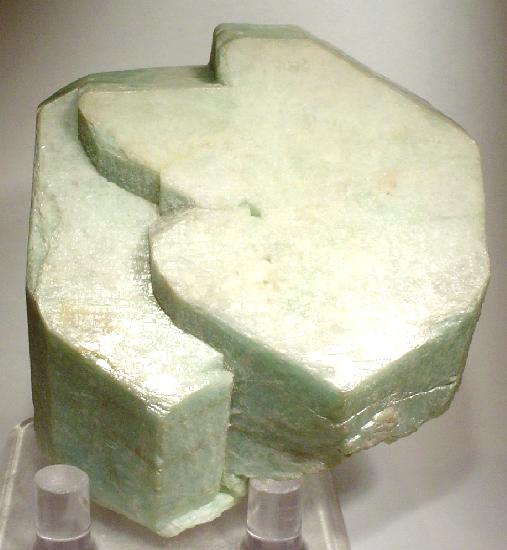Feldspar is the most common mineral in the earth’s crust. It makes up part of most igneous rocks, as well as part of many metamorphic rocks.
In fact, much of the moon (the brighter and more white parts) are made up of a rock which is almost entirely composed of feldspar called Anorthosite.
Feldspar is really the name of a group of minerals, which are all part of the silicate family of minerals, which all have SiO2 in their structure.
Depending on the elements present when the feldspar is being formed, feldspar has three different endmembers — or main forms — that it can take.
The most common of these are Orthoclase, a potassium rich feldspar; Albite, a sodium rich feldspar and Anorthite; a calcium rich feldspar. Other forms can be found as well, but these three are the main players.
Feldspars have a hardness of six to 6.5 on the Mohs scale. In crystal form they have either the lowest form of symmetry (triclinic) or the second lowest (monoclinic): both designations refer to the crystal axes. However, feldspar is most often found in massive form.
It has two or three cleavage planes, depending on which form of feldspar it is. Feldspars are used in glassmaking, paint and production of rubber. Orthoclase feldspar is also used for radiometric dating because potassium, its main constituent, is radioactive.
Feldspars are very commonplace minerals but can exhibit some very interesting properties. They are most often white or pale pink in color, but Amazonite (a rare type of Microcline feldspar) is a beautiful blue color.
Some forms of feldspar exhibit twinning, which is when two crystals share some of the same crystal lattice and grow together. A special type of this is carlsbad twinning, the only type that can be seen by the naked eye.
We have in the museum a very large and stunning sample of Cleavelandite feldspar, which is an agglomeration of bladed albite crystals. It is definitely worth a look!







